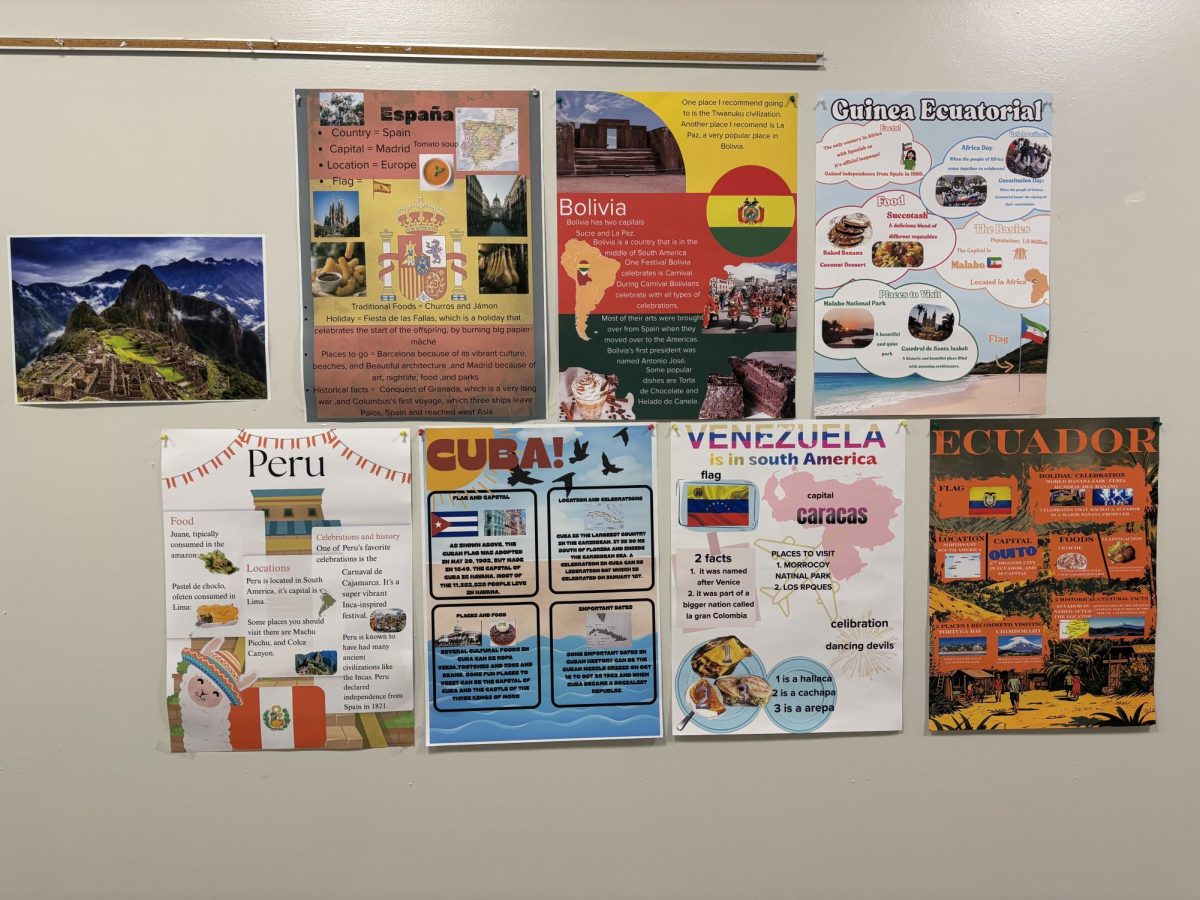The Spanish department stands out as one of the most diverse departments in the Middle School, these differences offering different perspectives to learning one of the most commonly spoken languages in the world.
Teachers in this Department come from all over the globe. 8th grade Spanish teacher Zeke Hoyos is from Valencia, Spain, 6th grade Spanish teacher Ted Sadtler is from New Jersey, Assistant Head of Middle School Vielka Reina is from Panama, 8th grade Spanish teacher Shannon McDonough is from Ohio, 6th grade Spanish teacher Leonor Taylor is from Peru, 7th grade Spanish teacher Juliana Floret-Faherty is from Brazil, and 8th and 6th grade Spanish teacher Magnolia Hemingway is from Columbia.
These differences in their origins make this department so different from the others. Reina has made a teaching point out of the differences in how Hoyos would say something compared to how she would. “When Mr. Hoyos and I used to teach the same course, we used to love saying ‘Oh, Mr. Hoyos used to say it this way, but I would say it that way, and you guys can say it either one.’”
Sadtler, a non-native speaker, explains how his learning experience shapes his teaching approach. “I think I come from it more from a rules or a bottom-up orientation. So I think that makes me more of a rules-focused teacher,” he says.
Combined, the department holds over 80 years of teaching experience, and all have different reasons as to why they started teaching.
When it comes to the language itself, Sadtler loves learning about the different cultures as well as the differences in Spanish compared to English. “I love learning [about] other cultures. I love learning how to express yourself in different ways, and how describing something in Spanish sometimes takes on a slightly different flavor than what I know as the English translation.”
8th grade Spanish teacher Shannon McDonough discovered her passion for teaching during her first trip to Spain. “When I went to Spain for the first time, I had friends that would be like, ‘Hey, order me this, do this for me,’ but I would teach them how to do it,” she says. “And then watching them succeed while they did it . . . was really exciting and I thought it was really cool. And . . . I realized how much I enjoyed that experience.”
Westminster Spanish teachers don’t just come from different backgrounds; they also bring different learning approaches.
Hoyos enjoys teaching his students about Spanish culture and how Spanish differentiates from country to country. “Learn about the culture and that it’s not one single country. There are 21 Spanish speaking countries around the world, which have their own unique culture and varieties of Spanish.”
Reina likes her classes to have a lot of conversation so that students are able to communicate with others in the real world. “I like to be like the expert in the room and teach and then have a lot of conversation,” she says. “I like kids talking and switching partners so that they are able to go to another country and at least have some sort of interaction with somebody in a different language.”
Westminster has also changed in the way it approaches teaching languages now compared to in the past.
Sadtler explains how when he first came to Westminster, the Spanish Department focused more on grammar compared to now where they prioritize communication. “When I came here, we were very focused on grammatical accuracy,” he says. “And grammar came first, And I think . . . we’ve started it at the other end now, and we focus on communication . . . we try to make it as culturally appropriate and culturally authentic as we can.”
Some teachers teach beginner speakers while others teach more advanced students. Reina has taught all grades in the Middle School and enjoys teaching more advanced speakers. Sadtler says that he doesn’t have a favorite and sees pros that cons with each level. “I love the silliness and excitement and curiosity of a 6th grader. And I love the comfort and confidence of an 8th grader.”
Hoyos finds that walking into the classroom and being able to speak to his students like how he speaks to his family and friends is something he enjoys. “I think what comes easier is walking into the classroom, speaking as I will normally do with my friends and family, which I get to do in [Spanish] 2 Advanced,”
McDonough enjoys teaching beginner speakers because she understands the struggles of learning a language while also enjoying advanced speakers because of her past education.“ I think I have an advantage as a non-native speaker of understanding the struggles of learning another language. So I actually really like the beginner classes because I know how hard it is to . . . get a really good foundation to build off of . . . but I also really enjoy the . . . advanced classes because I have my Master’s in linguistics.”


